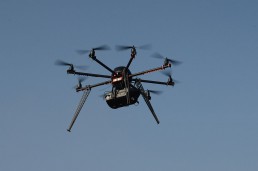In July 2016, 7-Eleven and drone startup Flirtey brought joy to some thirsty residents in Reno, Nevada, USA. This special Slurpee delivery (7-Eleven’s signature icy beverages) made headlines because it was the first FAA-approved home delivery by drone. While deliveries are a tangible use case for unmanned aerial vehicles (UAVs), commercial applications for UAVs run much deeper than just over-glorified delivery boys. As a matter of fact, transportation reporter Joan Lowy of the Associated Press reports commercial drone use is “the biggest game-changing technology in aviation since the advent of the jet engine.”
Deliveries are just the beginning
Outside of deliveries, what other applications are drones good for? Dronetech Europe identifies seven major areas of growth in commercial drone applications: 1) environment and renewables, 2) film, photography, and music, 3) sport and performance, 4) security and law enforcement, 5) emergency response, 6) agriculture and forestry, and 7) mapping and surveying. The common thread with all of these applications is data collection – and lots of it – from high-quality video footage to valuable spectral data about our environment.
Flying high with removable storage
All of that data collected by drones needs storage – and according to Wes Brewer, VP and GM of memory solutions provider Lexar, the microSD card has a bright future in that area. As Mr. Brewer points out, 8K resolution video, multiple sensor data, and 360-degree video capture will drive the need for greater performance and capacity in removable storage. SD cards have several advantages over embedded drone storage, including scalable capacity, higher-quality image storage, and lower-power data transfer.
Tuxera’s file system software is already inside selected commercial and consumer drones, bringing support for SD cards. Our software gives some added benefits alongside those brought on by SD cards including fail-safe data integrity in the event of power loss or crash, longer SD card lifetime, fast data transfer speeds, and low write latency when saving data to the SD card.
More data collection drives future storage needs
Commercial drones in particular are collecting an increasing amount of data. As businesses start using drones in a wider variety of applications, storage requirements continue to expand. For our part, we’re eager to continue improving data transfer and storage performance to meet those demands into the future.
This post has portions from a longer article at Engadget entitled, “Why drones are the next big thing in business.”


